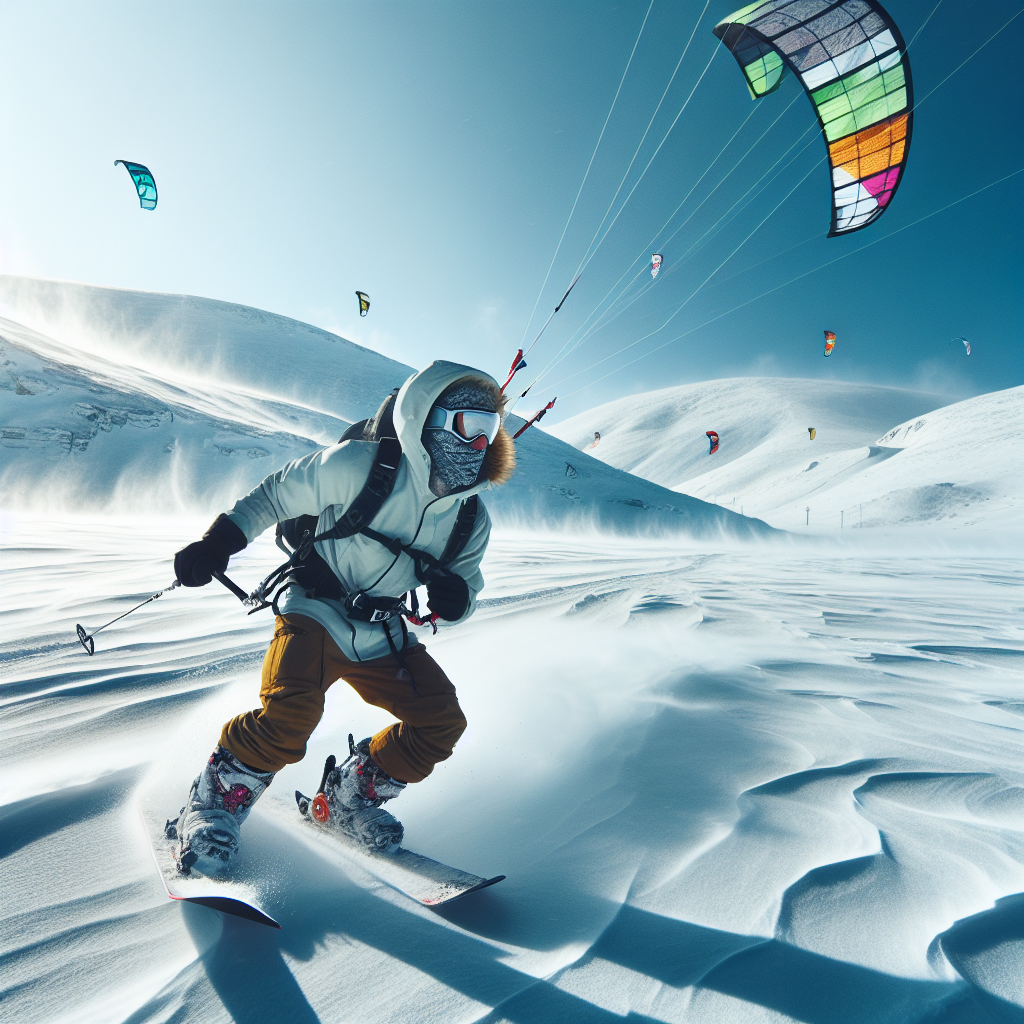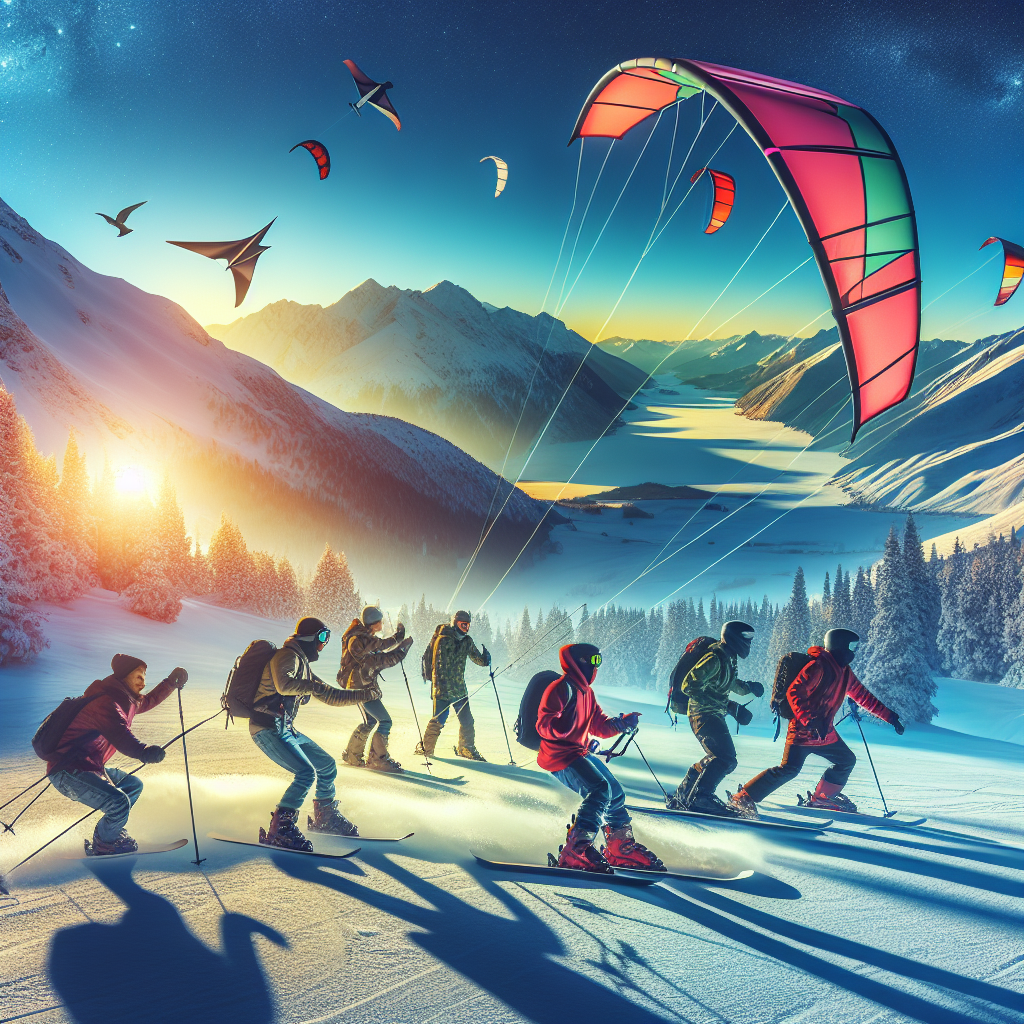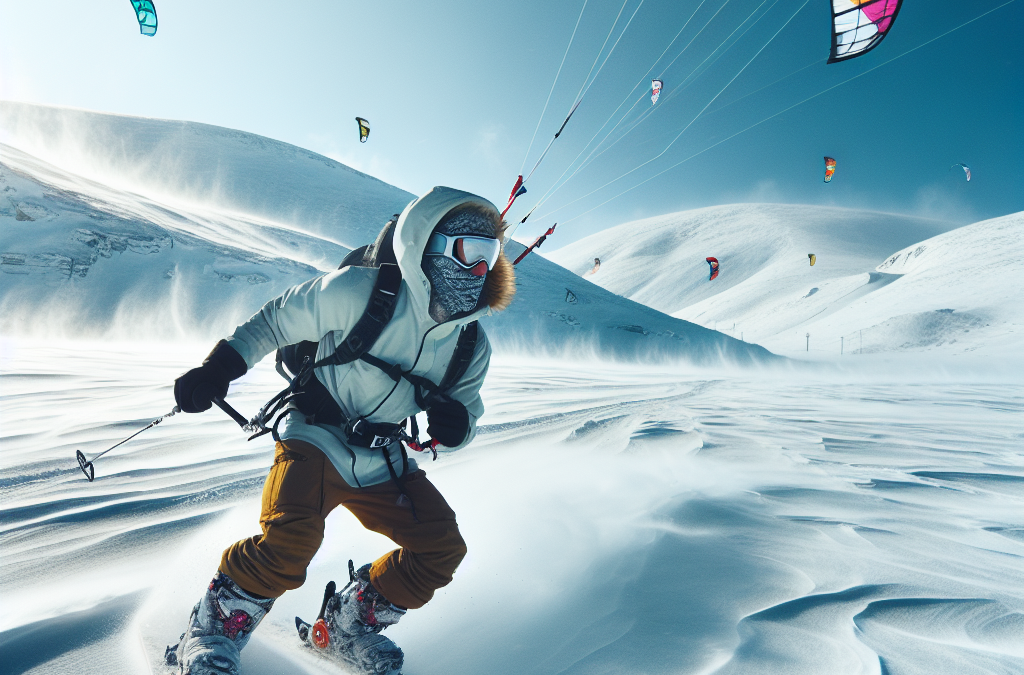Imagine having the ability to harness the power of the wind at your back, skimming across the white, snow-covered landscape in sheer exhilaration! “The Complete Guide to Snow Kiting” will take you through this thrilling winter sport, right from its basic concepts to the most advanced techniques. With this guide at your side, you’ll learn everything you need to know about choosing the right gear, understanding the weather and wind conditions, and refining your snow kiting skills. This guide offers an in-depth look into the exciting world of snow kiting, perfect for both novices and seasoned adventurers looking to spike their adrenaline rush this winter season.

Understanding Snow Kiting
Snow kiting is an increasingly popular winter sport that combines aspects of kitesurfing, windsurfing, paragliding, and snowboarding. This high adrenaline sport involves using the power of the wind to pull you along the snow-covered landscapes on a board or skis.
What is Snow Kiting
Snow kiting, as the name suggests, uses a kite to harness the power of the wind, propelling the rider across the snow. This can be done either on flat terrain or down steep slopes. The rider typically uses either a snowboard or a pair of skis. The kite is controlled by a bar attached to a harness worn around the rider’s body.
The History of Snow Kiting
While kite flying has been around for centuries, its application to winter activities is relatively recent. The sport originated in the late 20th century in northern countries, where snow and wind conditions are ideal. The pioneer riders were initially windsurfers who adapted their skills and equipment to the winter environment.
Why People Love Snow Kiting
One of the main reasons people love snow kiting is the freedom it offers. You can explore vast snow-covered terrains, glide over frozen lakes, and ascend snowy peaks. The feeling of being propelled by the wind is exhilarating. Moreover, snow kiting is an excellent source of exercise as it requires the use of the whole body.
Equipment Essentials for Snow Kiting
To enjoy snow kiting at its best, you need suitable equipment. Each piece of equipment serves a specific function and contributes to your overall safety and enjoyment of the sport.
The Kite
The kite is the driving force in snow kiting. It propels you across the snow and allows you to perform jumps and tricks. Kites come in different sizes, and the size you choose depends on your skill level and the strength of the wind.
Boards
There are two types of boards used in snow kiting: skis and snowboards. The choice between the two mainly depends on the rider’s personal preference and the terrain.
Harnesses
The harness links the rider to the kite. It allows you to control the kite effectively and comfortably. Most harnesses come equipped with a quick-release safety mechanism for emergencies.
Helmets and Protective Gear
Like any extreme sport, snow kiting can pose risks, especially for beginners. A helmet is essential to protect your head from potential falls. Other protective gear includes knee pads, elbow pads, and back protection.
Other Necessary Equipment
Snow kiting also requires additional gear, like goggles to protect your eyes from the glaring snow and gloves to keep your hands warm. You might also want to invest in safety equipment like a GPS tracker or a whistle.
Learning to Snow Kite
While snow kiting might look daunting, with proper instruction and practice, you can start enjoying this sport.
Finding a Snow Kiting School
The first step is to find a reputable snow kiting school. Look for schools that have certified instructors who follow established safety protocol.
Choosing a Trainer
Find a trainer whom you feel comfortable with. They should have a wealth of experience in the sport and be able to provide guidance and advice tailored to your specific needs.
Basic Skills Required for Snow Kiting
Like any sport, snow kiting requires a set of basic skills. These include balancing, steering the kite, and controlling your speed.
Understanding Safety Measures
Safety is an essential factor when practicing snow kiting. This includes understanding how to control the kite, knowing how to stop safely, and learning the correct way to fall to minimize injury.
Terrain and Weather Conditions
To thoroughly enjoy snow kiting, you need to have a solid understanding of the terrain and weather conditions.
Understanding the Right Terrain for Snow Kiting
Choosing the right terrain can enhance your snow kiting experience. This involves selecting flat areas with plenty of space for the kite to glide and avoiding obstacles such as large trees, power lines, and buildings.
Impact of Weather Conditions
Weather conditions can have a big influence on snow kiting. The strength and direction of the wind, the temperature, and snow condition are all critical factors that need careful consideration before setting out on a snow kiting adventure.
Adapting to Different Terrain and Weather Conditions
Adapting to different terrain and weather conditions is a skill that will take time and experience to develop. It’s always a good idea to start in easy and familiar conditions and progressively move to more challenging ones.

Advanced Techniques and Tricks
Once you’ve mastered the basics, you can start learning advanced techniques and tricks. It’s important to remember that learning these requires time and a lot of practice.
Improving Your Skills
Improving your skills involves fine-tuning your control over the kite and board, mastering your timing, and enhancing your balance and stability.
Learning New Maneuvers and Tricks
These can include jumps, spins, and flips. Always remember that safety is paramount and these tricks should only be attempted once you are comfortable and proficient with the basic skills.
Competing in Snow Kiting
If you want to take it to the next level, there’s the option of competing in snow kiting competitions. This will give you the chance to test your skills and techniques against other snow kiters.
Snow Kiting Safety
Security should never be compromised when it comes to snow kiting.
Essential Safety Equipment
This includes the earlier-mentioned helmet, harness with a quick-release mechanism, GPS tracker, and whistle.
Understanding Risks and Dangers
Some of the risks include being pulled into dangerous terrain or obstacles by strong winds, and kite or equipment failure.
Preventing Injuries in Snow Kiting
Avoiding injuries involves using the correct equipment, maintaining it well, understanding and respecting your limits, and always focusing on safety.
Snow Kiting Competitions
Participating in snow kiting competitions can be an exhilarating challenge.
Popular Snow Kiting Competitions
A few well-known competitions include the Red Bull Ragnarok in Norway and the Snowkite World Cup.
Preparing for a Competition
This involves rigorous practice, maintaining physical fitness, and understanding the specific rules of the competition.
Rules and Regulations of Competitions
Every competition has its own set of rules laid out by the organizer. It’s crucial to familiarize yourself with these rules to avoid penalties or disqualification.
Community Involvement and Lifestyle
Becoming part of the snow kiting community can help enhance your skills and enrich your overall experience.
Finding the Snow Kiting Community
Joining local clubs or online forums can help you connect with fellow kite enthusiasts.
Sharing Experiences and Tips
Sharing experiences and tips with fellow riders can help you learn and improve much faster.
Living the Snow Kiting Lifestyle
Embracing this lifestyle can involve travel to renowned snow kiting destinations, attending competitions, and continuous learning.
Snow Kiting Travel Destinations
Traveling to popular snow kiting locations worldwide can offer a splendid mix of adventure, exploration, and sport.
Popular Snow Kiting Locations Around The World
There are several snow kiting hotspots around the globe such as Alaska, Switzerland, Norway, and Canada, each offering unique terrain and conditions.
Planning a Snow Kiting Trip
Consider factors like your skill level, the type of terrain, travel arrangements, and local rules and regulations.
Respecting Local Rules and Regulations
Respect for local customs, rules, and regulations is essential. Always leave the area as you found it.
Environmental Impact and Sustainability
Lastly, like all outdoor activities, snow kiting should be carried out with respect for the environment.
Understanding the Environmental Impact of Snow Kiting
Snow kiting can impact the environment, particularly wildlife, land, and vegetation. Always try to minimize your footprint.
Sustainable Practices in Snow Kiting
These include sticking to designated areas, disposing of trash properly, and leaving the natural environment undisturbed.
Contributing to Environmental Conservation
By practicing responsible snow kiting, you’re actively contributing to preserving the environment for future generations. Remember, the rules of nature apply to everyone, including snow kiters.

